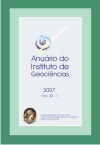Hydrogeological factors in the study of saline intrusion of the coastal aquifers of Maricá city, Rio de Janeiro, Brazil
DOI:
https://doi.org/10.11137/2007_2_104-117Abstract
The oceanic area of Maricá, in the east coast of the Rio de Janeiro State, relies on groundwater as its main source of fresh water supply along with the use of water tank trucks. With the increasing demand of water resources, water supply and contamination problems are foreseen, and sea water intrusion phenomenon is also expected in these aquifers. The groundwater resource of the target area has been submitted to quality degradation due to the advance of the saline wedge, the excess of pumping without control and also the pollution of organic origin. Considering this situation, the study aims to contribute to a better knowledge of the hydrogeological characteristics in order to assist the aquifer management of the coastal area under study. The area comprises a granular aquifer and local geology consists basically of marine and fluvio-marine Quaternary sandbar deposits, overlying a crystalline basement of variable depth. The study included the evaluation of previously existing hydrological data in the area, rainfall data, and a field survey in 41 wells, with measurements of hydrodynamic and physical-chemical parameters (temperature, electric conductivity, hydraulic head). Furthermore, an automatic instrumentation was installed to evaluate the response of the aquifer to recharge. Results indicate that aquifer salinity levels tend to rise in the SE portion, and also, apparently, there has been an increase in aquifer salinization in recent years, demanding urgent management actions. The automatic instrumentation shows that Maricá coastal aquifer gives a rapid response to seasonal factors and climate, showing some vulnerability, but also rapid recharge and dilution capacity.Downloads
Download data is not yet available.
Downloads
Published
2007-12-01
How to Cite
Almeida, G. M. de and Silva Junior, G. C. da (2007) “Hydrogeological factors in the study of saline intrusion of the coastal aquifers of Maricá city, Rio de Janeiro, Brazil”, Anuário do Instituto de Geociências. Rio de Janeiro, BR, 30(2), pp. 104–117. doi: 10.11137/2007_2_104-117.
Issue
Section
não definida
License
This journal is licensed under a Creative Commons — Attribution 4.0 International — CC BY 4.0, which permits use, distribution and reproduction in any medium, provided the original work is properly cited.















